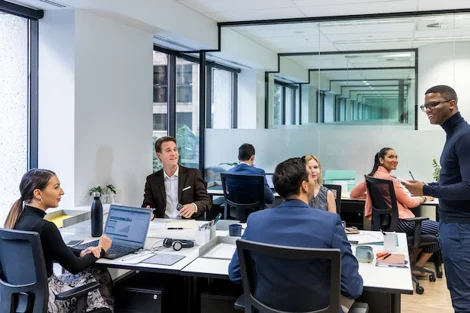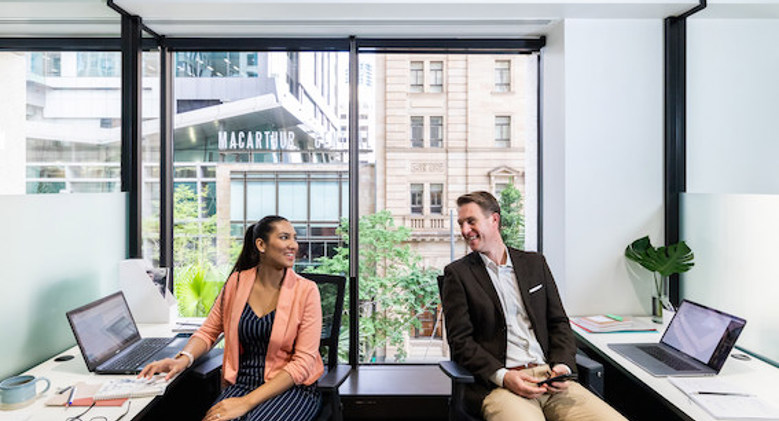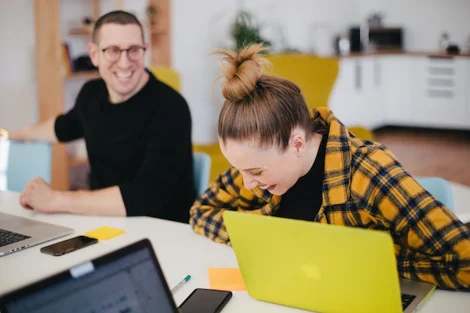
How your Company can Fight "The Great Resignation"
SHARE

Employers across a range of industries will have heard about the Great Resignation and warnings it could affect their ability to keep top staff members and ensure a stable workforce. But while these concerns may be well-founded, there are strategies savvy companies can put in place to ensure they hold onto their best talent and reduce the risks.
What is the Great Resignation?
The Great Resignation is an economic phenomenon that first emerged in 2021 during the height of the COVID-19 pandemic. Many employees have quit their job or are making plans to do so in the future.
The reasons for workers leaving their employment as part of this Big Quit are numerous and the subject of widespread speculation, with the health crisis causing a global re-think about the way people want to live their lives.
In some cases, dissatisfaction with careers and working conditions are brought to the surface, encouraging people to recalibrate their plans for the future and spurring on a desire for different working conditions. This new push for flexible arrangements was exacerbated when work-from-home became widespread during outbreaks of coronavirus.
Is the Great Resignation actually happening?
The Great Resignation is definitely occurring in some areas, particularly overseas. In the US, more than four million people quit their jobs in April 2021. At the time this number broke records in America and this trend has continued in the past 12 months with 4.4 million people quitting in April 2022. The jury is out on whether this phenomenon is occurring to as large extent in Australia.
Former federal Treasurer Josh Frydenberg described the Australian experience a bit differently, defining it as a “Great Reshuffle” with 300,000 people in the three months to November 2021 taking up new work, or about 10 per cent more than average but the participation rate remaining high across the nation. This is different to comparable countries where many have remained out of the workforce and are taking longer to transition into new roles.
However, the unemployment rate is at historic lows while job advertisements are high, which offers those looking for alternative employment many opportunities to switch roles often for a jump in pay and a flexible work environment.
How a hybrid work model works
Offering a hybrid work model to employees means providing options for where staff can work. This is usually a mix of remote, work-from-home days and in-office hours. How this is shaped can differ between companies and individuals. For instance, it could involve four days in the office and one from home, all days from home except for in-person meetings and anywhere between the two.
Historically, up to a third of the workforce has undertaken some work from home with only around 8% working remotely the majority of the time. The pandemic flipped this on its head, with more than 40 per cent of Australians working from home and the majority of professionals and managers regularly clocking on remotely.
Employers and their workers quickly found hybrid working provides flexibility, increases morale and encourages staff loyalty while giving companies the option to reconsider the need for large and expensive inner-city offices.
A Boston Consulting Group report on Australian employers’ planning during COVID-19 found the majority of companies are reconsidering their office space and about half were planning to reduce their real estate space in the future.
Hybrid working helps unlock creativity among the workforce, create new experiences for customers and increase both women’s workforce participation and overall employee retention as well as attracting new and diverse candidates.
Businesses that adopt a hybrid model are 28% more likely to deliver new and innovative products and services, according to a Telstra report on the workplace shift, and are 22% more likely to increase productivity.
How "Hot Desking" and the Hub and Spoke Model can improve productivity
Every staff member is different and some will not want to work from home all or some of the time. A pertinent option for employers looking to strike the right balance for workers and ensure they retain talent during turbulent times is hot desking.
Hot desking allows companies to offer staff a location to work in with all the associated comforts and benefits of an office, as well as conference rooms and other useful spaces to meet colleagues and clients, without needing to have a long-term expensive lease themselves. The number of desks can be scaled up and down as required.
This modern way of utilising co-working spaces is well-known for fuelling entrepreneurial spirit and helps provide a progressive and flexible environment with the practical aspects of traditional office work.
By providing this balance, the three quarters of workers who want to work from home at least some of the time can be better accommodated and employers can help avoid the Great Resignation.
Insights from our Industry
At Christie Spaces, surveying our pre- and post-Covid-19 data on office and coworking occupancy and enquiries, we have seen a shift in the utilisation of the hub-and-spoke model or team A and team B system for workplace attendance. This idea of a central satellite office and a happy medium between a remote and centralised workforce is the standard of the new hybrid model of work.
Many larger companies now opt for more flexible office designs with the ability to provide rotating workspaces that also offer built-in connectivity, such as meeting rooms and break-out spaces to collaborate with their wider teams.
Specific memberships to dedicated workspaces and their locations is also on the rise, as choosing a large provider of flexible space allows businesses to use a variety of spaces across Australia - whether for meetings or to accommodate for a now wider spread out workforce. An example of this is the ability of our members to now hold a physical space at any of our locations but access our meeting rooms and coworking spaces nationally through their access to the Christie Spaces App.
There is an obvious cost saving for businesses with this method as they decrease the number of total desks needed in their satellite office, but can still retain the higher productivity and team connectivity reported with face-to-face workplaces, as reported by the Chief Executive of the Property Council of Australia Ken Morrison.
The hybrid model of working also meets workers' expectations for a flexible working environment. By allowing workers to control their office schedule helps retain their newfound autonomy for their time by reducing commutes and the ability to prioritise home commitments when needed after or before work hours.
Related articles


Initiatives to Increase Employee Retention


